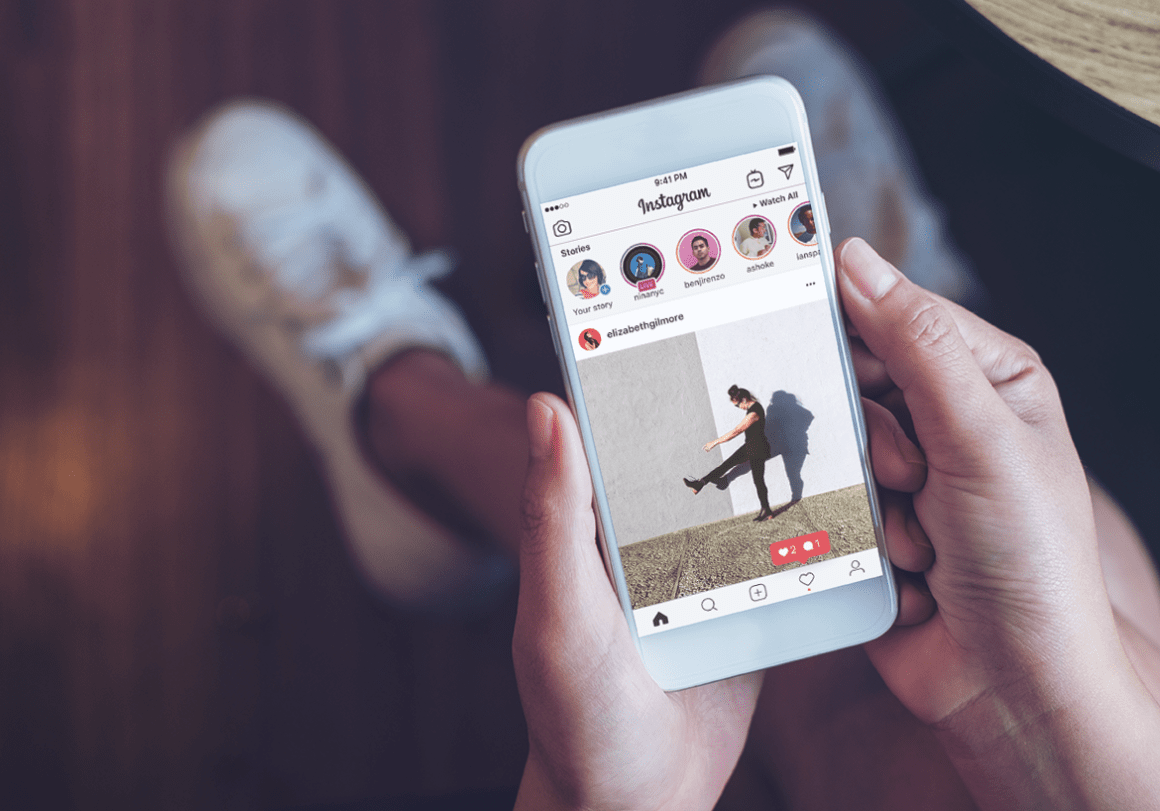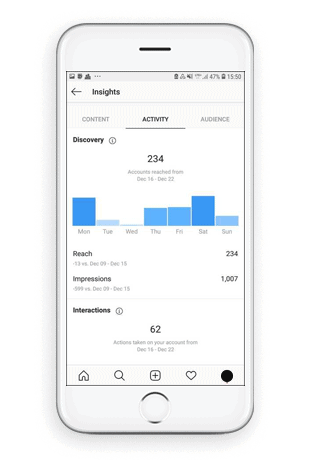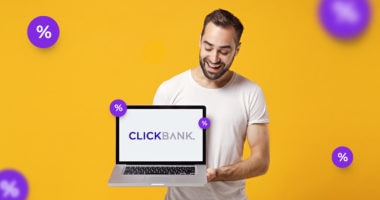If there is one social media platform that’s all over the place today it’s Instagram. All these bugs, constantly changing algorithms, and don’t even get me started on the whole drama around the no-more-likes situation. The only thing that remains more or less certain is advertising. Here, the app has got it just right!
So no wonder that most of the affiliates just can’t get enough of Instagram ads. In fact, more than 78% of US marketers believe Instagram to be the most effective platform for their purposes. After all, it is cheap, really simple to set up and – oh boy, do they convert! Instagram Ads receive clicks from 75% of Instagram users on average. Well, that is if you set up your campaigns in the right way. But don’t worry, that’s what I’m here for.
If you have any underlying Instagram-related issues to address, questions to ask, and ad campaigns to implement – it’s your lucky day! You’re a 5-minute read away from finding out all there is to know about how to benefit from tracking Instagram ads for your affiliate purposes. And as a sweet bonus, I’ll briefly walk you through setting up the tracker the right way.
But instead of jumping headfirst into this whirlpool of conversions, let’s quickly go over all the possible pitfalls first.
Why you should advertise on Instagram
If you’re anything like me and allow yourself to spend a decent amount of your free time scrolling through the gram you’re probably wondering – what’s with all the Instagram ads lately? True, the platform has gone a bit over the top over the past few months and there’s no escape from ads preying at you from every corner.
Well, at least they are native and usually pretty. And for us, as advertisers, it only means more opportunities for improvement.
A recent report published by Locowise showed that over 50% of Instagram users follow at least one business, whilst 60% of overall users are engaged in brand awareness and new services. Even more importantly, impressive 75% took positive action and visited a product website, after clicking on a post.
In brief, it means that using Instagram for marketing is not just smart. It’s essential. It also means that both B2C marketers can reap the benefits of Instagram as an advertising channel. Which, in turn, suggests that you, as an affiliate, shouldn’t overlook the platform either. But, most probably, you already knew that.
It is no surprise that Instagram ads are an affiliate’s dream. After all, it grants you the more than reasonable costs of running ad campaigns in addition to the fantastic ROI. Well, okay, to reach those dream numbers you first need to make sure your ads are properly optimized and targeted.
Types of Instagram Ads
You can choose to run your ads through Facebook ads manager or through Instagram directly. As these two social platforms are closely entwined, it is a clever move to do both. Find out more about Facebook advertisement here, but for now, let’s stick to IG.
You probably already know how simple and intuitive Insta ads are. You should also know that there’s a whole bunch of options for you to choose from, be it a single photo/video ad or a carousel ad.
Then you get to decide where you want your ads to be featured – in the users’ feed, while they’re swiping through the stories, in Explore section where the recommended content is sent, or you can go full Pinterest and create your very own collection of inspirational advertising.
You can even integrate the entire campaign with your business Facebook profile and enjoy the full scope of what today’s social media has to offer for affiliate marketers.
Each type has its own merit. So if you’re not sure what type of advertising will be best for you – here’s a little something. Although, you can always maximize your ad’s delivery and budget when you have automatic placement enabled. This will allow for an even spread across the platform.
How much Instagram advertising costs
Now, “how much” is great, but we all know what it really stands for: ”is it really worth it”? And more importantly, what is the average ROI from all the effort you put into creating and running your Insta ads.
Like in every business these days, it really depends on the amount of investment, effort and time you are willing to dedicate to your ad campaigns on Instagram. The recent data suggests that an average Instagram advertisement will cost you something between 70 cents and $1 per click (CPC) or around $5 per each 1000 visitors (CPM). From this, you can expect around 0.8% click-through-rate (CTR).
An important thing to keep in mind may seem far too familiar for you as a seasoned affiliate: Instagram advertising runs on bids. But it’s not enough to be the highest bidder – you also need to be certain that your ad will match all the community guidelines and fit the accounts you target.
On the one hand, it means more work for you. But on the other, once victorious, you can rest assured that your ad will reach all the right people at all the right times. And, at the end of the day, isn’t that what you’re paying for?
How to maximize your Instagram advertising ROI
There are a lot of “ifs” when it comes to creating and running a successful Insta ad campaign. Yet, there are also certain things that are time-tested and are bound to ease your way to enrichment.
I would recommend starting small and then gradually increase your investment as you start reaching your target audience.
Try to clearly predefine your objectives. Is it engagement you’re looking for? Or perhaps you are more interested in redirecting them to your website or installing your app? Establishing your main goal is essential for registering a conversion (your number-1 success metric). But how to ensure you reach that goal ASAP?
Without careful optimization and a clear understanding of how your ads are performing, you will never know which KPIs are being met and which keep on holding you down.
Let’s be honest – we all like a high positive ROI. And not all of us are into long lonely evenings spent with our computer and the database. I hate to break it to you, but the two are forever interconnected. So if you’re looking for a high-performing campaigns you need to be ready to put in some effort, no matter how great of a platform Instagram is.
It’s always going to be up to you to test your ads, keep them fresh, and make sure your KPI’s meet your expectations. Here, Quality will always tower over Quantity.
Tracking Instagram Ads
So we agree that Instagram is an awesome place for the affiliates to run their campaigns. It offers a wide range of types of ads and its price model is pretty friendly. But is it just as good for providing quality conversions as it is for generating out-of-this-world engagement? Let’s find out!
Using tracker for advertising
First things first – why bother with tracking in the first place? If you’re using a tracking solution already feel free to skip this part and jump straight to the setup process. But if you’re still contemplating whether or not it is going to be worth your money – let me make things a little bit clearer for you.
In order to make proper money as an affiliate you need to keep track of your traffic, offers, and the people who generate that traffic. You need to know who is the best buyer and who needs to see more of your ads. You will eventually have to run campaigns with more than one traffic source, at the very least.
And let me stop you right there – no. You cannot do it by yourself. Well, okay, perhaps you can, but the results aren’t going to be anywhere near as impressive as what you could get with a proper tracking software, like Voluum.
Don’t get me wrong, keeping up with the industry trends, checking the competition, and constantly upgrading your buyer persona is still needed. It’s marketing 101 and in order to succeed in any business, you need to pay attention to these details.
You may even go ahead and try to keep track of all your ad campaigns across all channels, like Google ads, Facebook/Insta, TikTok, etc. But can you be sure that you won’t miss anything important? Do you trust yourself enough to risk it all and lose to the human factor at the end? Trackers collect and store all the data in one place. Can your mind do that?
And let’s sit on that buyer persona some more: do all your ads target the right people? Do they even reach the right people? And what percentage of the people they reached are actually willing to engage with your offer? It’s a lot of info about every single user to keep up with.
Instagram Conversion Tracking
True, Instagram Business accounts are pretty good. They can tell their users a whole bunch of useful insights like what people are mainly interacting with their posts, what times of the day gets the most engagement, and even what is the estimate reach and the number of conversions of each ad.
Did you catch that?
Estimate.
There’s a whole lot more to this word than meets the eye. While Instagram is an amazing traffic source for both B2B and B2C businesses, it is not properly designed for tracking. Things may begin eventually change now that it is officially a part of Facebook, but from what we know so far, these guys aren’t really willing to share their findings with just anybody.
So my advice would be to keep Instagram Insights as a reference to your campaigns’ performance but to trust a professional tracking software… Well, with exactly what it’s been designed for.
Ad Tracking Software Setup: Voluum Example Guide
Cool, you’re ready to set up the tracker! It may look complicated at first, but fear not! Once again – I’ve got you covered.
I’m going to quickly cover the basics of setting up the campaign tracking correctly, and those of you who decide to trust their future affiliate profits to Voluum are very welcome to take the full advantage of our detailed guide for the affiliate campaign tracking setup.
Keep in mind that both Facebook and Instagram run on Facebook Ad Manager, so technically this process is almost the same for both platforms. And let’s go!
So, for those of us who have slightly less experience in the field – in order to track anything through a tracker you need a traffic source (Instagram), an offer to promote, and a tracker (e.g. Voluum). As the best things in life don’t come free – you also need an advertising budget for the traffic source and an active account in the tracking platform. Without those, you’re a lot like Jon Snow in the Battle of the Bastards. Not something you would like to be. So prepare to fork out.
As for our current subscribers – not many things are different from your everyday campaigns, but there are still some subtle elements important to keep in mind for everything to work properly. So let’s cover it step by step.
Part I: Setting Up Tracking
First of all, you need to set Instagram (or Facebook) as a new traffic source in your Voluum panel. When that’s done, move on to creating a new campaign as you would do with any other source. After dealing with that, in the tracking tab select “direct tracking URL”, copy-paste it, and repeat the same step for “direct tracking pixel”. I hope that by now you know that Facebook tracking runs on pixel, so it shouldn’t come as a big surprise.
Voluum setup is done! I can’t speak for other trackers, but here it shouldn’t take you more than 5 minutes.
But don’t get too excited – we still have work to do.
Moving on to Facebook’s Ad Manager. Create a campaign with an ad set, provide all the necessary details it will ask you for and go to the Ad level. Once you have chosen where your ad will be placed, make sure to copy your direct tracking URL in the Website URL field.
Now every ad click will direct the users to your landing page. Yet still, we’re not quite done with the setup.
In order to make sure that every visit is reported to Voluum, you need to set up a direct tracking script on a landing page. This is when that one HTML course you had in high school finally pays off. For we’re gonna edit your landing page’s code! Take the direct tracking script from before and place it in the <head> section of the page. OK, maybe I lied and that high-school course was as useless as you suspected all this time. Because you’re all set here. Congrats!
Part II: Reporting Conversions
You wish it could all just end there, wouldn’t you? Don’t despair though, we’re almost done.
All the steps so far have ensured that you will know whenever the user visits your landing page from a specific ad on Instagram. However, you’re going to need a Conversion Tracking pixel if you want to get information about conversion from an affiliate network back to Facebook Ad Manager.
To get it all done, you will need to – surprise-surprise – create a Facebook Pixel. You get it done through the conversion tracking in the advanced settings of the Ad section in the Facebook Ad Manager. Next, it’s time for some more of that HTML magic. Choose to “manually install the code yourself”, copy the entire pixel and paste it in the header part of the code. Make sure you’ll save the entire bit of the code somewhere safe.
Locate a target URL in your Facebook Pixel script (it will have “src=” in the beginning and copy it to the clipboard. Move on to Voluum.
There, you need to go back to Instagram or Facebook as a Traffic Source that you’ve created in the beginning and choose “Edit”. You will have to put the target link from Facebook Pixel to the Pixel Redirect URL.
Ta-da! Well done, you’ve just completed the circle of tracking.
Instagram Ads are on top of the advertisers’ minds all around the world for a reason. I know that, you know that, and even your potential customers know that. But there is always more than one way of doing something. This post right here offers you one of the best solutions on how to maximize your profits through tracking conversions. So good luck!
And for even better results, try Voluum and fight Insta algorithms together!






2 comments
great sharing
Thank You For Sharing Useful information.